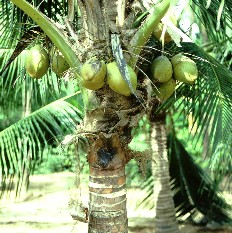Three Ateneo de Manila University students have discovered that a mixture of micro-organisms can produce bioethanol through a process called "cellulose degradation."
"What my students did recently, they tried to use rice straw. Rice straw is a by-product of agriculture, it is not used directly for food and most of the time it is burned or fed to the animals" Crisanto Lopez, professor at the Ateneo, said.
The study was initially a thesis project of Ateneans Miguel Angelo Vicente, Dulce Marie Romea and Jose Maria Villamor. It was a prerequisite for their Bachelor of Science degree.
The study showeed that rice straws have the potential to produce 205 billion liters of bioethanol per year. "It's a source that does not directly influence the price of the rice itself as a food source," the students said.
With the advent of increasing crude prices worldwide, the search for alternative fuel has been gaining ground. Like Brazil and America, the Philippines can have the same edge in producing alternative biofuel from corn and sugar cane. However, Lopez said there will be a re-allocation of both crops since it will be needed to be redistributed for food and fuel production.
"We might lose land for food production since they will be used for producing fuel. We don't want that to happen. We are an agricultural country and we want food for our people."
Lopez said that the discovery of the potential of bioethanol from rice straws is "very timely."
"Through the use of a substrate like rice straws which is just a by-product, it can help in the production of bio-ethanol which is an alternative source of fuel," Lopez said.
For cellulose degradation to be highly effective, Lopez said, "it's either you look for the most active and most effective enzymes or you just use the micro-organisms which are newly isolated or you genetically engineer microorganisms so that they can produce the enzymes."
The students used three different organisms in the experiment. This was done by using Phanaerochete chrysosporium as an alternative to sulfuric acid as the primary lignin degrader, Trichoderma reesei as the source of cellulase and Saccharomyces cerevisiae as the fermenting microorganism.
"They are all fungi, they are different from bacteria. Fungi are eukaryotes while bacteria are prokaryotes. Trichoderma reesei is used to produce the enzyme cellulase. In the industry, they just let the fungus produce the enzyme and then purify it. The Phanaerochete chrysosporium is a white rot fungus usually seen in old wood while theSaccharomyces cerevisiae is a yeast normally used for the fermentation of beer and other alcoholic beverages," he said.
In the study, the students used three different experimental setups. First was to test the synergistic capabilities of the three organisms. Second, the group tried to figure out if the organisms worked more efficiently when they were introduced to the rice straws one at a time.
The third setup used in the study was to determine whether the presence of Phanaerochete chrysosporium was a prerequisite for the effective production of bio-ethanol because of its capability to produce ligninase.
Secret results
Lopez said that the students had to evaluate each result of their experiment to a control set up which is currently used to produce bio-ethanol from corn and sugar cane. "The results were compared to the results of a control setup which simulated the procedure done in industrial ethanol production processes," the students noted in their research.
And after the tests were done, the students concluded that the best setup was when they combined the three organisms.
"What they just investigated is, if they could actually put the three microorganisms at the same time or one at a time, similar to sequential addition. They found out that if you place-hold the three microorganisms at the start then it will produce more bio-ethanol after fermentation. Several combinations showed that addition of the three micro-organisms at the start of the fermentation will produce more or higher bio-ethanol," Lopez said.
He added: "Now the synergistic reactions of the three micro-organisms led to the production of bio-ethanol from rice straws. But of course, this is just a preliminary study. We just wanted to show that with the use of the different micro organisms, which can produce the three different enzymes needed, we can produce bio-ethanol from rice straw as a substrate."
Lopez, a young scientist who will soon travel to Germany for his doctorate in Philosophy degree, said the research conducted by the students was related to his genetic engineering project in Japan.
"It's related to what I did in the University of Tokyo for my postgraduate training in Japan where I genetically engineered Aspergillus oryzae. It is a fungus which is very known in Japan for producing sake," he said.
"I transformed Aspergillus oryzae so that it can produce the enzyme from the lower termite. Of course you know the termite is very good in degrading wood. Kumakain sila ng wood sa bahay, that's given already, especially the members of the lower termite which can produce the cellulase," he said.
"What the scientists in Japan did, they isolated the gene responsible for producing that enzyme and then they gave us the gene and then I inserted the gene into Aspergillus oryzae which is a fungus," he said.
"And then, I tried to overexpress some other genes in the same microorganisms so I can look at which one is better, which strain is better, out of the many transformants that I did," he said.
Lopez said he cannot yet disclose the full results of his experiments since it will be published first in an international science journal. He said that after his experiment in Japan, he went back to the Philippines and suggested topics for the students who then chose to use the rice straw for their thesis project.
Source: Biolife News Service

No comments:
Post a Comment